Tag: Bodybuilding
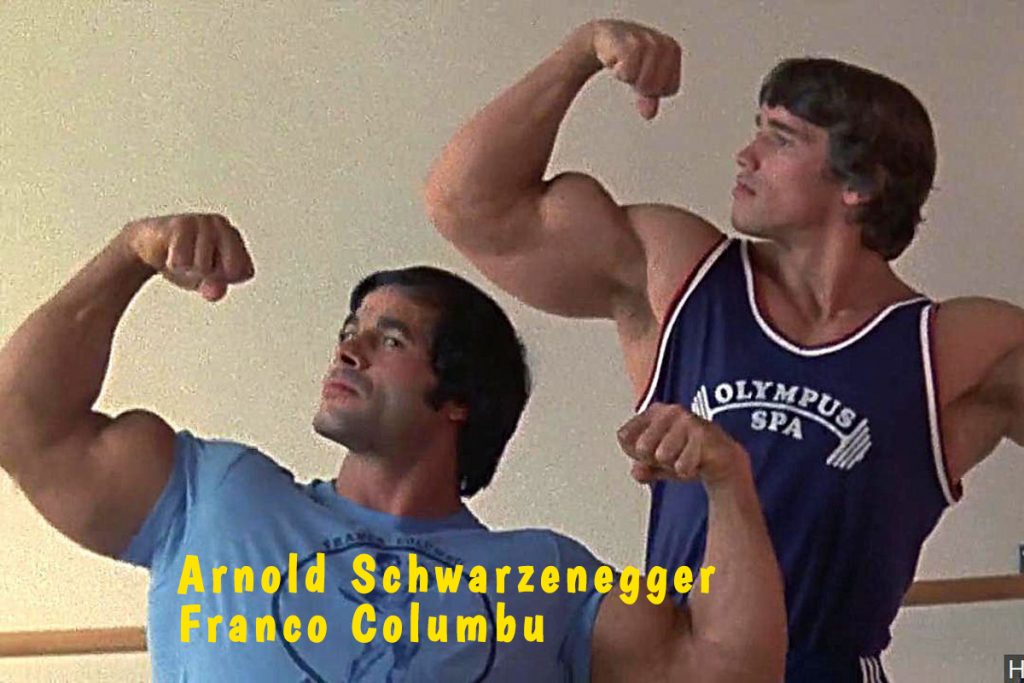
Legendary Lifting Partners You Need to Know
Almost everybody has, or should have, a lifting partner. If you are still lifting weights alone, it is time you considered finding yourself a friend to help you make your experience at the gym a breeze. Lifting becomes more comfortable with a gym friend, iron brother or iron sister, swolemate, or metal comprade, whichever term you use at your sport to refer to a lifting partner. However, finding yourself a lifting partner is not as easy as you think. It is not anyone you meet at the gym who can make the right workout partner. It goes beyond physical compatibility, and there has to be some chemistry between the two of you. But how will you know that you’ve found the perfect lifting partner?
Well, the following are clues you may have found the ultimate lifting partner
Similar Workouts
The perfect gym partner likes most of the things you want. That includes specific exercises and particular kinds of weights. If you find out that you and your new partner do many incline presses than decline presses, you found him/her! The same applies to the number of deadlift sets and preps, and the right partner will go just as far as you can go with deadlifts. If you feel sort of overworked or underworked after a lifting round with your new partner, the chances are that they may not be the right partner for you.
Bond Outside the Gym
The relationship with your partner must not be confined to the gym. The perfect lifting partner will maintain contact with you outside the workout spot. More often, the two of you would be seen grabbing a meal together or just strolling around town. Real lifting partners will often text, joking about weights, meals, and many other things not necessarily associated with the gym.
A lifting partner where you live, they know some of your family members. They will come to check on you when you don’t respond to your phone. Your partner knows a couple of your friends as well. Once in a while, your families share a meal or a drink at a high-end restaurant. Similarly, they are your first comforters when you’re faced with sad moments like grief. That is the right lifting partner for you.
Related Article: 5 Fitness Tips While Gyms Are Closed
You Have Similar Goals
The truth of the matter is; it is easier to work with someone who is trying to achieve the same thing as you or similar. The ideal lifting partner shares your aspirations in terms of what they want to accomplish in the short-term and long-term. If you are working for a lean muscle, find yourself someone who shares that dream with you. Similarly, the perfect gym partner should aim for the same career goal as you. There is no point in training with someone whose primary goal is to win a local title while you are aiming for a significant IFFB title.
Similar Bodybuilding Thoughts and Philosophies
What does your lifting partner think about bodybuilding in general? Are they doing it for fun, or are they doing it to achieve short-term goals? Your partner’s thoughts about the exercises you do will tell you whether you have found the right lifting partner or not. If they are mostly pessimistic about certain things, you should consider finding yourself another partner. Reason? They will derail you and prevent you from achieving your bodybuilding goals.
They Are Your Solid Rock
A good match will be your biggest motivation in every bodybuilding aspect. Does your partner push you to achieve your set goals? Even when your will to go on is at its lowest? If yes, then you have just found yourself an ideal partner. The wrong partner would probably discourage you from doing certain things or doesn’t push you. Also, they should be by your side when facing a bodybuilding contest at any level. They should be among the first people to comfort you when you don’t perform as expected in a particular competition.
Most importantly, a lifting partner doesn’t see you as a rival, but a comrade. That means sharing your successes and defeats in equal measure. That is the person you ought to keep as a lifting partner.
Tries to Fix Your Flaws
You don’t have to tell your lifting partner things about you. They should know you inside out as far as bodybuilding is concerned. That includes your strengths and weaknesses. The most significant role in their life is to help you become a better version of yourself. Your lifting partner should help you overcome bodybuilding challenges such as successfully performing strenuous exercises. Most importantly, they should be completely honest with you. If you were losing focus and headed in the wrong direction, they should be able to point it out.
Now that you know what your ideal lifting partner should or should not do let us see legendary lifting partners bodybuilding partners should emulate. You don’t have to copy everything they did, but let it serve as a guide to help grow your bodybuilding career.
Arnold Schwarzenegger and Franco Columbu
Arnold Schwarzenegger is undoubtedly one of the best bodybuilders in history. His rigorous acting career meant he had to do a lot of weightlifting to take on giant monsters in his fictional world. However, without a supportive lifting partner, he could not have been as successful. Arnold was struck by the tragic death of his long-time friend and lifting partner, Franco Columbu. The two first met in Germany in the 60s. Their friendship would move to the gym where they broke and set new records in weightlifting. The duo would do as much as bench press 500 lbs. each and top it up with squats 545lbs. Additionally, the lifting partners made deadlift 710 lbs. look like a piece of cake.
Arnold Schwarzenegger was not your ordinary movie star. Most of the things Arnold did in his action moves he could do in real life thanks to his prowess in weightlifting. Together with Columbu, they would do some weight lifting an average person would consider impossible. For instance, they used 100-pound dumbbells for eight preps. And not only that, they did it for flat bench flyes. Additionally, the partners would barbell row 315 for ten without a sweat
Mike Tyson and Zab Judah
Modern boxers such as the likes of Mike Tyson lift weights like regular bodybuilders. Most of them also use performance enhancement drugs and steroids. There is a thin line between bodybuilding and boxing. Although the two are separate careers, they have a common factor, which is the gym. Before hitting the ring, Tyson spent hundreds at the gym working out and lifting weights like every other bodybuilder. Zab Judah is not just a normal weight lifting partner, but he is also a reputable boxing champion and is considered the best welterweight boxer.
However, if you were to face either of them in a training session, your life would flash before your eyes. The speed, furiousness, aggressiveness, and intensity of their training is out of this world. If you walked into the gym and didn’t know them well, which is quite unlikely, you can’t say one of them is the trainer. Zab Judah stated that Tyson worked as much in training as he works in the ring. That is perhaps the reason the legendary boxer has seen more successes in the ring than any other fighter in history.
Typical exercise for Tyson and Zab involve 2000 squats, 66-pound barbell that is accompanied by 500 shrugs. They also do a lot of neck exercises using various weights. Their partnership in weightlifting has seen them become the undisputed boxers in their respective fields.
Flex Wheeler and Ronnie Coleman
Most people only know Kenneth ‘Flex’ Wheeler and Ronnie Coleman as rivals. What many people don’t know is that the two trained together as well. Their connection goes beyond the ring to other aspects of bodybuilding.
For instance, Ronnie once stated that it is Flex who introduced him to steroid use. But that is not the juice here. The two bodybuilding icons did a lot together to achieve mutual dreams, except when they were competing against each other, of course. Flex Wheeler has won 4 Arnold Classics and many other titles. Ronnie Coleman, on the other hand, commonly referred to as the real-life ‘Hulk’ won Mr. Olympia eight years in a row. The combined achievement of the two bodybuilders is a feat many bodybuilders can only dream of.
The two bodybuilders are known to have intense back, shoulder, and chest workouts. The workouts included barbell deadlift, T-bar row, assisted and non-assisted pull-up machine, inclined barbell raise, seated calf raise, among others.
Dexter Jackson and Kai Greene
Dexter Jackson and Kai Greene had a unique training style that involved body part split. The overall objective was to develop maximum muscular mass hypertrophy. The exercises typically involved 3 to 4 sets. Additionally, each training had approximately six activities. If you are still wondering why you need a lifting partner, try digging deeper into the kinds of exercises these two did together. The discipline and commitment to do these exercises successfully comes with a collaboration of two like-minded bodybuilders.
Their vigorous exercises saw both of them succeed in their respective fields, sometimes in the same competition, beyond expectation. Dexter is an Olympia bodybuilding champion as well as a 2015 Arnold Classic winner. Kai Greene may not be fortunate, having come second in the Mr Olympia competition three consecutive times in 2012, 2013, and 2014. However, his bodybuilding has contributed to his successes in other areas such as acting, as a trainer, and artist.
Frank Zane and Dave Draper
The duo is lucky to train alongside Arnold and Columbu. Zane and Draper may not have achieved much in their bodybuilding career, but they are among the best lifting partners. Their training followed a weekly routine with each exercise meant to achieve a particular goal.
On Mondays, Zane and his partner would do quadriceps and calves. They would do forearms and Abs in the evening of the same day. Every other day of the week had two sets of exercises, one in the morning and the other in the evening. On Thursdays, for instance, they would do back exercises in the morning then shoulders, forearms, biceps, and abs in the evening. Their training involved three days of rest every week.
Frank Zane is a 2-time Mr. Olympia winner while Dave Draper is considered a legend from the golden era. The latter won Mr. New Jersey when he was only 21 years of age.
Conclusion
Bodybuilding is a sport of pride, but one can achieve a lot more if they have a lifting partner to help them gain some lifting milestones. The best bodybuilders in history have had a lifting partner at some point in their fitness careers. A lifting partner does not necessarily make the weights lighter but will motivate you to lift even heavier weights. Like it was highlighted earlier in this article, the perfect lifting partner will push your fitness limits and inspires you to bring out the best in you.
If you have never thought about getting yourself a lifting partner, it is about time you found one. A lifting partner doesn’t have to be a fellow bodybuilder, but it would be better if they are one. Finding a lifting partner could be as easy as approaching anyone at your gym. It will take you a couple of days to know whether they make a perfect partner or not. If not, feel free to move to the next person.
Overall
All in all, find yourself a lifting partner who is disciplined enough to help you realize your bodybuilding dreams. Bodybuilding comes with many freedoms. Consequently, many people do not make it to the top because of a lack of discipline. Additionally, you may have heard of prolific bodybuilders who came down crashing after finding themselves a bad company.
In conclusion, a lifting partner is like your third eye. They see what you don’t see, and they know what works for you and what does not. Listen to what they have to say, you don’t have to agree with everything they suggest, but consider their opinion when making critical bodybuilding decisions.
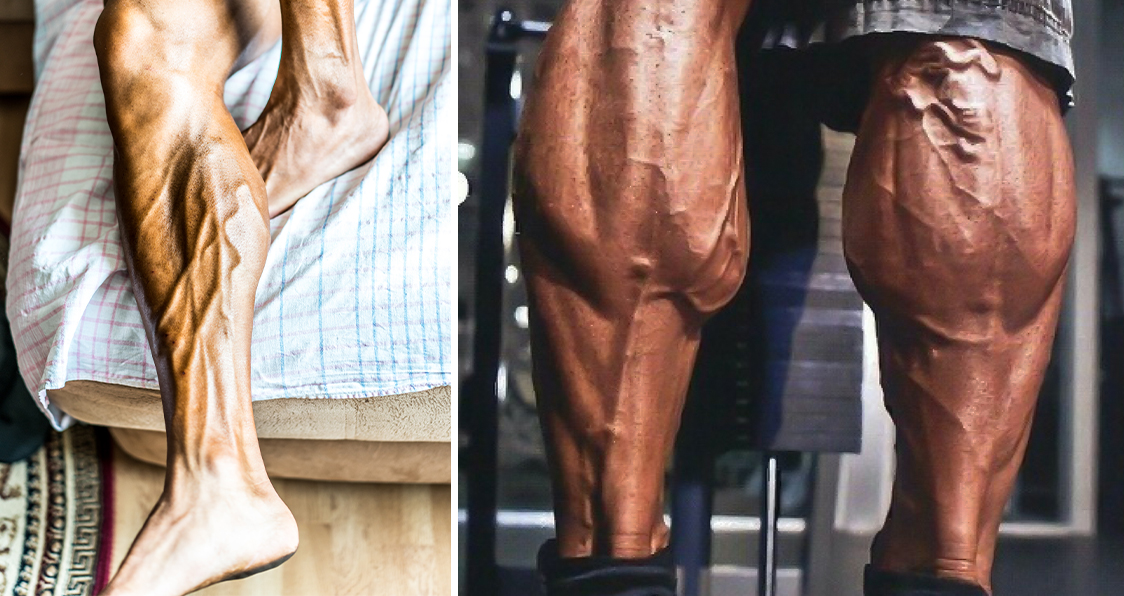
10 Reasons Why You’ll Never Have Big Calves
Calves are one of the most underrated body parts. A pair of chiseled calves can arguably overshadow shirt-ripping arms. But it’s easier said than done, lower legs can be a stubborn muscle group to develop.
Look around your gym, and you’ll see many guys flexing their arms and pecs in their mirror, but you’ll hardly see anyone showing off their calves. Turning your calves into full-grown bulls tests your grit and mettle. It’s also what separates the men from the boys.
Don’t get us wrong, this article is not meant to discourage you. We have put together a list of reasons why most people fail to build their calves. Avoid committing these mistakes, and you’ll be the owner of two big and beautiful cows.
10 Reasons Why You’ll Never Have Big Calves
Treating Calf Workouts Like Accessory Work
If we got a dollar every time someone called it a day after completing two exercises in a calf workout, we’d have our own Bitcoin fund by now. Some people think that since calves are a relatively small muscle group, they don’t need to go too hard on them.
Your lower legs are used to carrying around your bodyweight throughout the day. If you want them to grow, you’ll have to do more than just a few sets on the seated calf raises. Treat your calves like accessories, and they are going to remain that way.
Using Too Much Weight
Most people let their egos get the better of them in the gym. They put on more weights on the bar than they can handle. A limited range of motion is one of the most common mistakes people make while training their little toothpicks.
Range of motion is the name of the game when it comes to calf development. You should be on your toes (just like a ballerina) at the top of the movement and your heels should be a few centimeters off the floor at the bottom of the lift.
Training Too Little
Overtraining is one of the most misunderstood concepts in bodybuilding. Gym bros love to flaunt their broscience on the subject whenever they get a chance. Noobs are advised by the bros to not train their muscles more than twice a week.
The sad news here is that most people can’t train, if they wanted to, with the intensity and volumes required to hit the state of overtraining. There is a big difference between being sore and being overtrained.
Overtraining can impact your CNS (central nervous system) and immunity. How many people do you think can train with the fervor required to overtrain in every single workout? Since your calves are used to taking a beating, the rule of thumb for calf training should be to train them every day if they aren’t sore.
Training in the State of Exhaustion
Many people train their calves after they have been exhausted by a leg workout. These people follow their intuitions and get to the lower leg workout without any planning due to which they end up doing the exercises they’re comfortable performing.
If your calves are lagging, you should train them at the beginning of your workouts. Your other option would be to train them along with your upper legs using super-sets. You can’t expect to build monster calves while you’re out of gas and running on fumes.
Not Hitting Failure
Not training to failure is the extension of the overtraining mentality. Calves get the nastiest of pumps when you train to failure. Not everyone can handle the pain and hence people fall off after doing 10-12 reps.
You aren’t going to see any gains in that rep range. Your calves are used to taking a lot more workload as compared to what you do in your workouts. Training until muscle annihilation and then pushing through it is where the gains lie.
Low Intensity
When it comes to training calves, it’s best to avoid the intensity and volume debate. You need to get the best of both worlds and should be doing high reps with lower weights as well as lower reps with higher weights.
You can add a new dimension to your workouts by using time stops for your sets instead of the usual repetition stops. Instead of doing 12-15 reps of a calf exercise, perform a set straight for two minutes without any rest.
Time under tension (TuT) can also play a major role in developing your calves. Follow the 5:2:2:2 rep tempo (five seconds while lowering the weights, a two-second hold at the bottom, two seconds on the way up, and a two-second contraction at the top) to annihilate your calves.
Training Calves as Single Muscles
You’ll never be able to develop the inverted heart-shaped muscle on the back of your lower leg if you treat it as a single muscle. Your calves consist of three heads and you need to target each head separately.
On a calf raise exercise, keep your feet parallel to each other on the platform to target the medial head. Keeping your toes together and heels apart (forming an ‘A’) will target your outer calf head, and placing your toes apart and heels together (forming a ‘V’) will hit the inner head.
Using the Same Exercises
If your calf exercise arsenal consists only of seated and standing calf raises, you’re not going too far in the lower leg game. The stubborn calf muscles will get used to your workouts soon and stop responding if you don’t keep switching your exercises frequently.
Donkey, smith machine, bodyweight, leg press calf raises, to name a few, should be a part of your lower leg workouts. Your goal should be to not repeat the lower leg exercises before a couple of weeks if you train your lower legs four times a week.
Recovery – massages
Every person has a different muscle composition. Most people with tiny calves have a tight fascia which can require some extra work other than the workouts. Visiting a physiotherapist and getting deep-tissue massages every week can help ignite growth in your calves.
Not Deploying Different Training Principles
Most people use advanced training principles like dropsets, supersets, intraset stretching, BFR training for every muscle group except their calves. Calves are a muscle group that needs these advanced techniques for breaking the plateau.
If you’re serious about building your lower legs, you’ll have to stop this step-motherly behavior. It’d be great if you showed your calves the love they deserve and made up for all the times you screwed up.
How often do you train your calves? Let us know in the comments below. Also, be sure to follow Generation Iron on Facebook and Twitter.
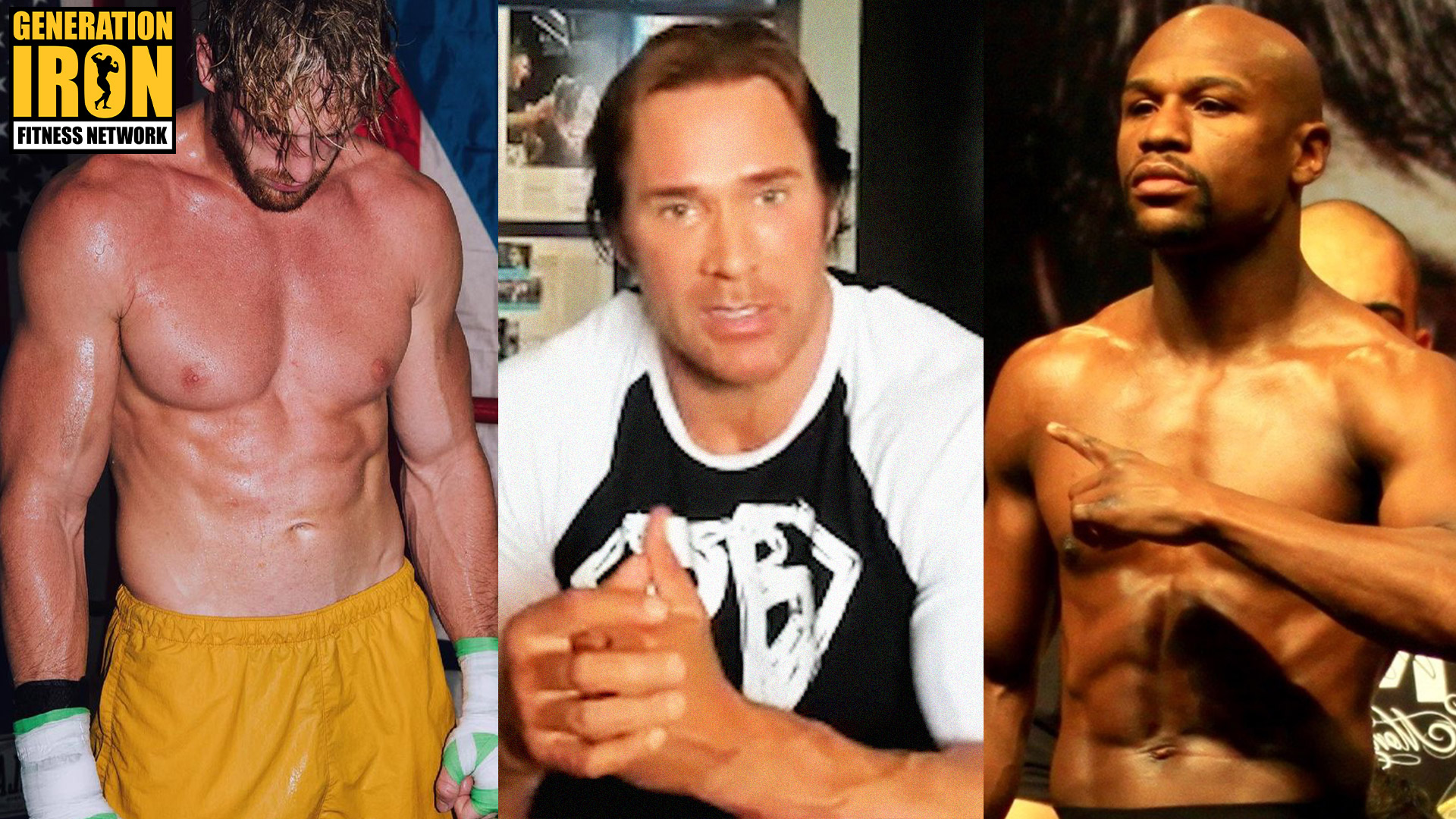
Mike O’Hearn: People Want To See Logan Paul Get His Ass Kicked… And He Knows It
Mike O’Hearn Answers: Is Logan Paul vs Floyd Mayweather bad for the sport of boxing?
With the Logan Paul vs Floyd Mayweather boxing match right around the corner, the controversial influencer has been making headlines again after an eventful press conference for the bout. Logan Paul as a public figure has been a hotly debated topic for years now. Is his success bad for the future of entertainment? And now more specifically, is his latest fight against Mayweather bad for the future of boxing? In our latest GI Exclusive interview, Mike O’Hearn weighs in on whether or not Logan Paul is a good or bad change for boxing.
The Logan Paul vs Floyd Mayweather boxing match is not the first of it’s kind. Not only has Paul been doing super exhibition PPV matches in the past, but there was also the UFC/boxing crossover of Conor McGregor vs Floyd Mayweather. These “super fights” fall outside the traditional norms of professional boxing. However, they also bring in massive amounts of interest and money. They are arguably more financially successful than real title matches in the sport.
Of course, popularity does not always equal quality. This is the main controversy behind Logan Paul’s entire career. Whether it’s boxing, YouTube, or any other place he appears – Logan Paul brings in massive views and massive money. But does it come at a cost? Does it diminish the credibility and quality of entertainment and sports?
We asked this question during our latest interview with Mike O’Hearn. Mike O’Hearn is a bodybuilder and public figure who’s familiar with controversy. He’s a bodybuilder who has consistently claimed to be all-natural. But the general bodybuilding public don’t believe he’s telling the truth due to his incredible physique. Not only that but O’Hearn is also a man who is familiar with building his own brand and personality beyond just being a bodybuilder.
[embedded content]
Check out our GI Exclusive segment with Mike O’Hearn above!
So what does he think of Logan Paul? His personality, love him or hate him, brings in attention. That attention creates massively attended events. That brings in money – which in turn can help bolster whatever industry Paul is engaging with. His latest, a boxing match against Floyd Mayweather – is set to potentially break records in terms of sales.
Mike O’Hearn sees no problem in Logan Paul’s tactics. While O’Hearn personally does not find Paul entertaining, he also sees the numbers. Most people enjoy watching Paul, either to “hate watch” him or because they are legitimate fans. Either way, Logan Paul is aware of this fact. He’s taking advantage of it. O’Hearn sees no problem in that.
Ultimately the success of Logan Paul relies 100% on his fans continuing to take an interest. He’s not forcing fans to enjoy his boxing crossover events. In that sense, it’s less Logan Paul that is the problem and more the audience. They decide what interests them. Right now, Logan Paul is the thing they want.
Mike O’Hearn goes on to mention that anything you can do to trigger society will always get attention. If you can monetize that attention, then you’re finding success in a tactic that always works.
Mike O’Hearn even relates Logan Paul, his success, and his controversy to modern bodybuilding.
“I said this to some old time bodybuilders that don’t have a big following on social media,” Mike O’Hearn states in our interview. He goes on:
“They’re like, ‘I won the titles, I won all of this, and I don’t get the respect I deserve.’ And it’s like – it’s the world that changes. You have to keep adapting. You have to keep moving with it. It’s the personality. Bruce Lee and Arnold [Schwarzenegger] made it because of their personality. If they were boring cardboard they wouldn’t have made it.”
You can see Mike O’Hearn break down his thoughts on Logan Paul and viral personalities in sports above. Check it out in our latest GI Exclusive interview segment!
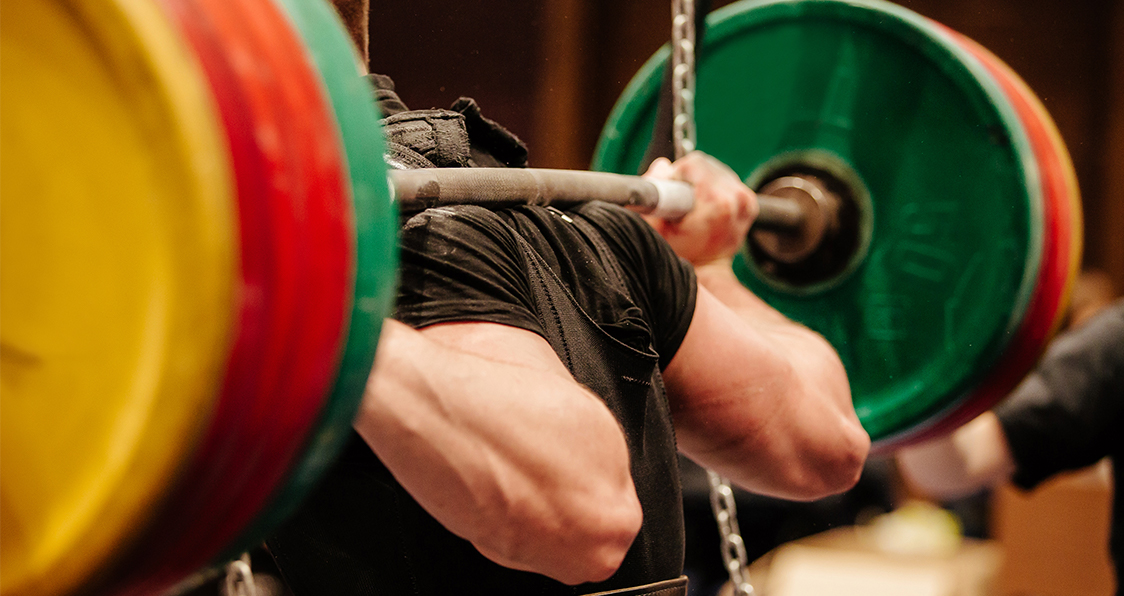
Perfect Your Muscle With The Zercher Squat
Put your muscles to the test.
It’s no secret that every weight lifter loves leg day. Seriously. It’s not mind-numbingly difficult or torturous what so ever. Often times people complain about leg day and to those individuals we have a few words for you: stop your whining.
Leg day is the one day out of the week where you get to focus on some of the most important muscles to develop in the body. Not only do you work your legs, but with most exercises targeting the legs you must utilize your lower back and your core in the movement as well. Want a strong stomach and back? Then perform some squats to make some major gains in those areas.
Now leg day can be a bit tedious, performing the same exercises over and over can be effective to an extent, but ultimately it’ll run you right into the plateau wall of doom. There’s nothing wrong with switching up your routine now and again, but you don’t want to stray too far from the formula that brought you to the dance. So what exercise should you add or supplement to your leg day training? The Zercher squat, that’s what.
What the hell is the Zercher squat? It’s a variant on the regular squat that most of us are used to. It’s not quite a front squat, but it easy to confuse the movements a bit. Firstly, you perform this exercise at a squat rack. Rather than grip the barbell with your hands you load the bar onto your forearms, lock one of your fist with the opposite hand, and perform the squat from that position. Sounds pretty funky, we know. Maybe you’re wondering what the hell is the benefit to performing squats this way? Well be patient and we’ll tell you.
Great for Beginners
The Zercher Squat is great for beginners. Why? Because it works your technique and the mechanics of the exercise. This squat is more of a hip dominant exercise and will also help to improve your posture as well. This exercise could be the key to improving your regular squat and has the added benefit of not having stress your spine. It’s a win-win.
Work Core
Remember when we said squats can work your core? Well the Zercher squat emphasizes working the anterior muscles as much as the posterior chain and legs. The stabilizing anterior muscles, namely the abs and core, can some extra work from this motion. If you want to develop more than just your legs and get a stronger core and back then this exercise is for you.
Squat Deeper
We’ve said it once and we’ll say it for all time. If you want to build up your hamstrings, get some monster calves, some major quad work done, and just generally maximize your leg development, then you need to squat low. By focusing the weight towards the front of body, much like a front squat, you can focus more on squatting lower to get a complete range of motion. Utilizing the Zercher squat to improve your squatting depth will eventually translate to your regular squatting movement.
Is the Zercher squat apart of your move set? Let us know in the comments below and be sure to follow Generation Iron on Facebook and Twitter.
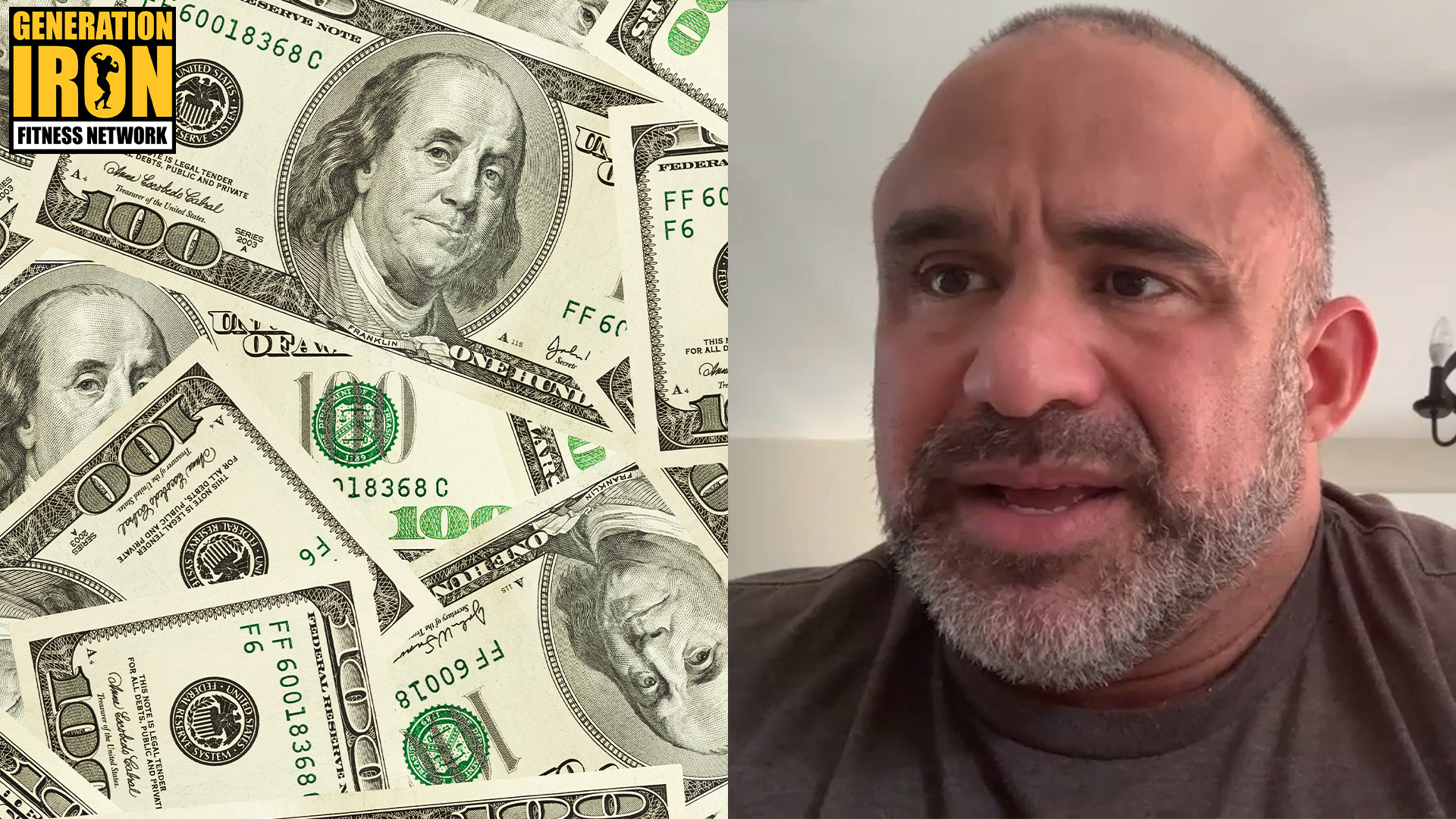
Jose Raymond: You Should Never Do Bodybuilding To Make Money
Jose Raymond’s advice to young bodybuilders: don’t become a bodybuilder for fame or money.
If you’re a fan of the sport, it’s common to celebritize the top athletes in the sport. Like any other sport, truly gifted athletes seem larger than life. They accomplish things that are impossible for most average folk. Since the inception of sports as entertainment this has allowed for famous athletes to bring in big money. Suddenly, you have fans who are inspired for partially the wrong reasons. They want to become a star athlete simply to become rich and famous. In our latest GI Exclusive, Jose Raymond shares his key advice to young aspiring bodybuilders. Don’t enter the sport for the money or the fame.
During our interviews and conversations with pro bodybuilders, we always make a point to ask them to share advice for aspiring bodybuilders. The star athletes of today are directly responsible for inspiring the star athletes of tomorrow. So any advice they can share could help shape the future of the sport.
So when we asked Jose Raymond to share his key advice – it was less about specific workout or diet tips. Instead, it was about the mentality behind the sport. His message – don’t become a competitive bodybuilder motivated by money or fame. His reason? Only a very small percentage end up getting that kind of achievement.
Now don’t let this be discouragement from Jose Raymond. Far from it. What Jose wants to express here is a message about passion. Bodybuilding requires an entire lifestyle shift. Whether you compete or not. Whether you succeed or not. You will need to eat, sleep, and train under the strictest of circumstances in order to shape and transform your body. Even if you become successful at it – if you don’t love the process, you will never be happy. It’s just that much of a sacrifice.
[embedded content]
Check out our latest GI Exclusive segment with Jose Raymond above!
That reality behind professional bodybuilding is this – pro bodybuilders don’t make the same kind of revenue overall as other bigger professional sports. That’s not to say there are some who bring in big fame and big dollars. But if you compare it to a sport like football, where even the least talented professional player will make big money simply for being on a pro team, it’s a whole different ballgame compared to pro bodybuilding.
Unlike many other sports, bodybuilders don’t get paid if they lose. You only win prize money for gaining a top placing. And even then, unless you win first place at one of the biggest shows, you won’t earn that much money. Yes, sponsorships and entrepreneurial opportunities can arise from pro bodybuilding. But that takes work in and of itself separate from the work of being a bodybuilder.
Which brings us back to Jose Raymond’s advice. Bodybuilding is hard work. It’s the kind of day in and day out hard work that can burn out many people. So his biggest advice is for a bodybuilder to truly be passionate about the grind and the lifestyle. The money may come and go. The fame may come or may never reach your lane. But if you’re passionate about the sport – none of that will matter. Bodybuilding, at its core, is about self change.
Yes, you can be competitive and want to achieve greatness. That’s the key to any professional competitive sport. But you should make sure to fall back on one thing behind that – passion for the lifestyle of bodybuilding.
You can watch Jose Raymond go into more detail in our latest GI Exclusive interview segment above!
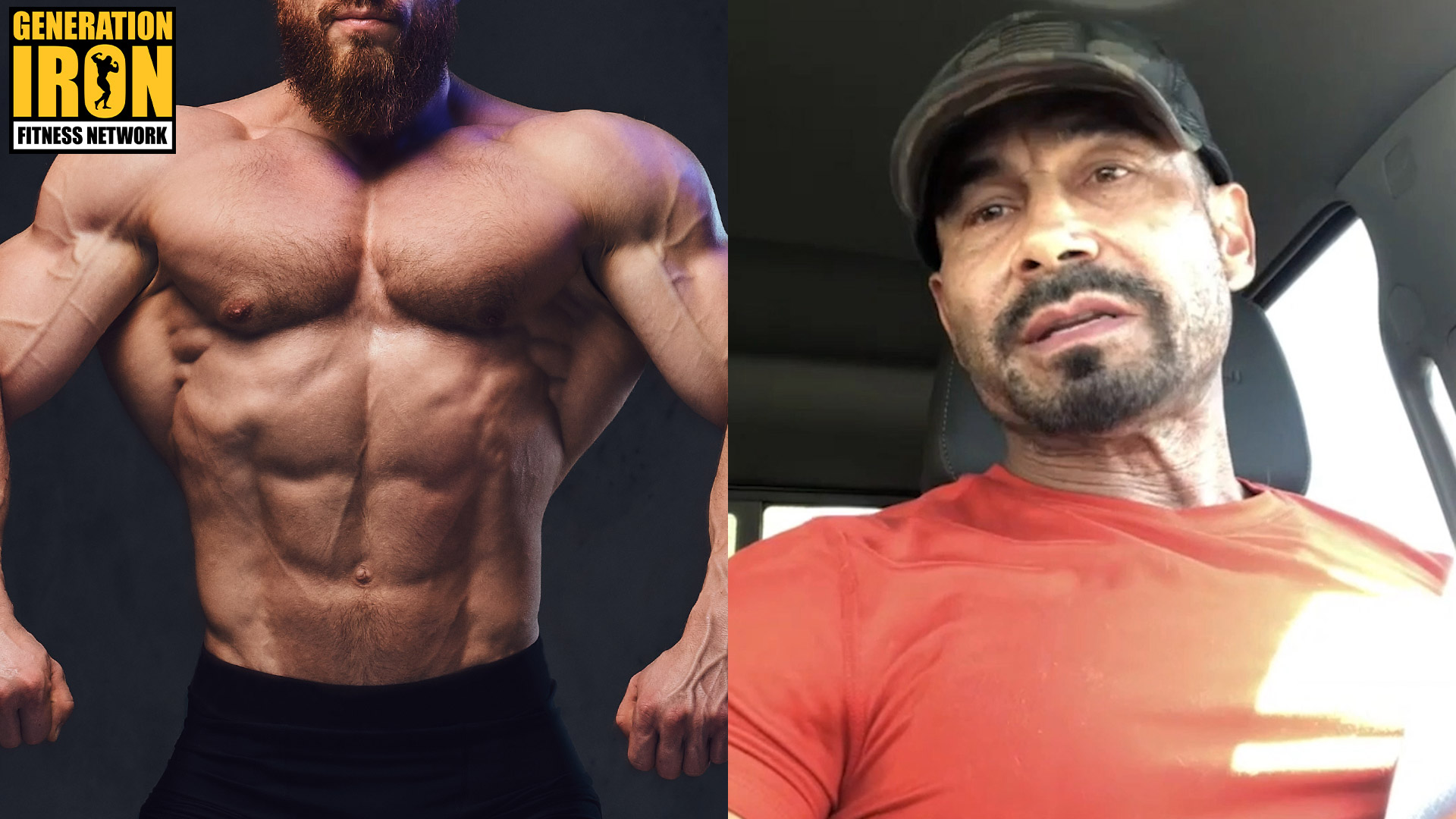
Danny Hester: Stop Calling Bodybuilding A Selfish Sport
Danny Hester debunks the persistent myth that bodybuilding and bodybuilders are inherently selfish
Danny Hester is a top level bodybuilder who has been around for a long time. He’s lived and competed through multiple eras of the sport, eventually earned an Olympia title, and trained numerous celebrities on the side. It’s safe to say that he has an in-depth perspective on bodybuilding over the past few generations. That’s why he is angered when people consider bodybuilding a selfish sport. Sometimes even bodybuilders themselves make this statement. In our latest GI Exclusive, Danny Hester explains why bodybuilding is not a selfish sport and how debunking this thinking can lead to more success for aspiring bodybuilders.
On the surface, bodybuilding on a pro level seems to be a passion of vanity. It’s about obsessing over each and every inch of your body and perfecting it. While that may be true, there is also a deep comradery and spirit between bodybuilders who compete in the sport. Not only that – but a bodybuilder is made up of a team – dietitians, trainers, and coaches.
This is the point Danny Hester wants to get across during our new video conversation. He is tired of people, even fellow bodybuilders, calling the sport selfish. Being a niche sport, Hester sees a true connection and togetherness among bodybuilders. Though he does understand where the “selfish” sentiment first came from.
Our discussion started off specifically discussing money in bodybuilding. How hard is it to make a living as a full time bodybuilder? Is it easier today than it was in the past due to online and social media? Ultimately, Danny Hester believes it evens out. It’s not better or worse – just very different.
[embedded content]
Check out our latest GI Exclusive segment with Danny Hester above!
So when it comes to bodybuilders leaving their hometowns, coming to California, and trying to start a life as a bodybuilder – it can be financially hard. This is where the selfish part comes into play. For bodybuilders starting out, the sport and lifestyle can seem selfish. The coast of supplements, gym memberships, and sacrifice in a traditional social life can all amount to an isolated life.
The reality, though, is that bodybuilding is a close knit community. When starting out and facing tough times – it might be easy to become isolated and see selfishness in the sport. So what Danny Hester wants young bodybuilders to know is this. Ask for help more than you do. Don’t be afraid to connect and put yourself out there with other bodybuilders. Don’t assume they all have it figured out because they look successful on social media.
Social media can be a trick. A classic, grass is always greener, scenario. The truth is behind the photos are more real lives with deeper problems than they are letting on. So Danny Hester wants to promote the comradery of bodybuilding. He wants to inspire young bodybuilders to connect more and see the non-selfish side of the sport.
It can be a real revelation. It can help bodybuilders from burning out. It can change the entire perception of bodybuilding at a time when it’s most important. Ultimately, it can make you a better bodybuilder.
You can watch Danny Hester go into more detail in our latest GI Exclusive interview segment above!

The Axis of Steroid Aftermath
Lots of reasons have been floated as to the main reasons which drive people into abusing steroids, both male and females. In most abusers, running across the gender divide, it has well boiled down towards the main concepts within the tenets of self-image and performance. For more than six decades, anabolic steroids have seen tremendous … Read More →
The post The Axis of Steroid Aftermath appeared first on Bodybuilding Steroids Info.
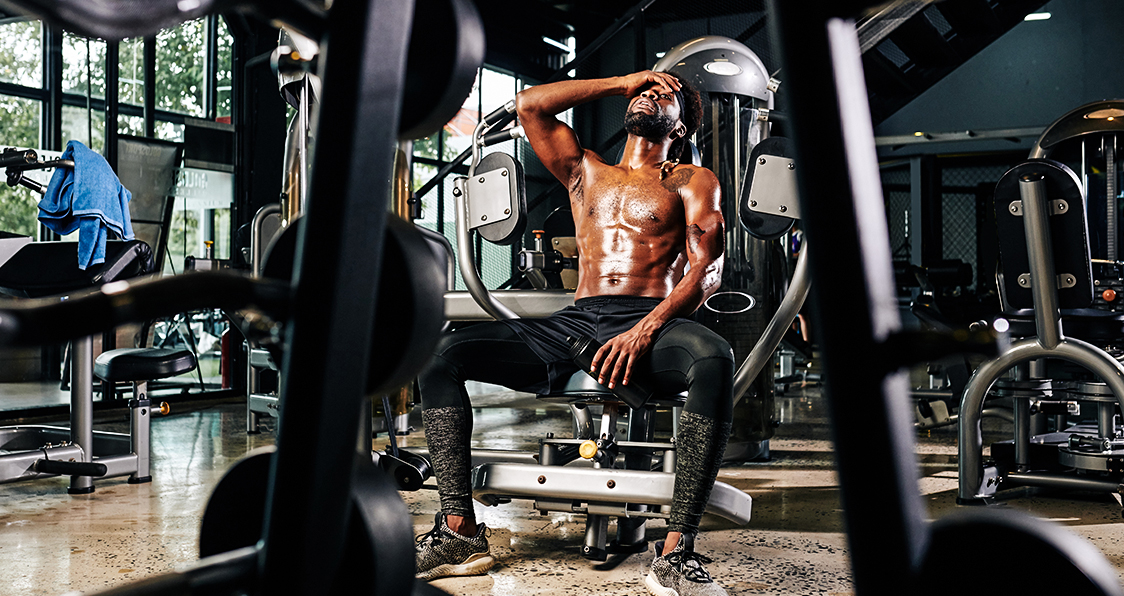
Top Six Ways To Test Your Body’s Limits
Best Ways To Test Your Strength and Body’s Limits
If you’ve been around the fitness scene for some time, you probably have been asked “how much can you bench?” or “how many muscle-ups can you do?” Even if you know the maximum weights you can lift, you still have a feeling that you can do better.
In this article, we’ll give you solid ways of testing your body’s limit so that the next time you face a life-or-death situation or a simple question as above, you know what you’re capable of doing.
Squat, Curl, and Push Press
Fit: 20 reps in one minute
Above-average: 18 reps
Ordinary: 16 reps
The squat, curl, and push press will test your anaerobic conditioning. Anaerobic endurance refers to your ability to work at the near-maximal intensity in bursts of 20 to 60 seconds. In this type of exercise, your body uses fat as a source of fuel.
Test – Pick up dumbbells that are roughly 30 percent of your body weight and hold them by your sides while placing your feet shoulder-width apart. Perform a squat, curl the dumbbells to your shoulders as you stand up, and then press them straight overhead using your legs. Return to the starting position and repeat for one minute.
One Controlled Wall Squat
Fit: Full squat in control
Above Average: Halfway down
Ordinary: Less than halfway
The controlled wall squats test your mobility which is one of the most undervalued aspects of fitness. The more mobile you are, the better you can move your joints through their full range of motion and the less likely you are to be injured.
Test: Stand facing a wall with your feet shoulder-width apart and toes 2 inches from the baseboard and turned slightly out. Keeping your feet flat, chest up, and back naturally arched, see how far you can lower your body without touching the wall or falling backward.
Long Jump
Fit: 8 feet or more
Above Average: 6 to 8 feet
Ordinary: Less than 6 feet
Explosive strength is an integral part of overall fitness. There is a reason why everyone from college strength coaches to drill sergeants uses the standing broad jump to gauge raw power.
Test: Stand with your feet placed shoulder-width apart and your toes on a line. Dip your knees, swing your arms, and jump as far as you can. Measure the distance from the starting line to the back of your heels.
Clapping Push-ups
Fit: 10 clapping push-ups
Above Average: 5 clapping push-ups
Ordinary: No clap
A strong upper body makes all the difference inside and outside the gym. It gives you an edge in most sports, whether you’re trying to tackle an opponent in football or trying or spring off the mat in a UFC Octagon.
Test: Place your hands shoulder-width apart and your feet should be closer than shoulder-width. Use the 3:1 ratio as a guide – lower yourself 3 times slower than you push. Push yourself back up explosively so your hands leave the floor. Maintain a straight body as you clap in midair and land back in the starting position.
Plank
Fit: More than three minutes
Above-average: 2 to 3 minutes
Ordinary: one minute or less
Planks are one of the most brutal exercises. They are one of the exercises which look easy from far away but can kill you once you start performing them. Planks entered the mainstream as CrossFit caught fire.
Test: Get into a planking position by placing your forearms on the floor. Your elbows should be directly under your shoulders and your entire body should be in a straight line throughout the exercise. Brace your core by contracting your abs as if you were about to be punched, and hold the position for as long as you can.
Deadlift 1.75 Times Your Bodyweight
Fit: 1.75 x bodyweight
Above Average: 1.5 x bodyweight
Ordinary: Bodyweight
Deadlifts have been a symbol of machoism for a long time. There are only a few other exercises that can test your strength like the deadlifts. Deadlifts are a must for people who want to build strength and muscle mass.
Test: Since you’ll be performing a one-rep max, load a barbell with the maximum amount of weight you can lift once, and bring the bar close to your shins. You need to make sure you’re following the correct form or otherwise you risk getting injured.
How much can you bench? Let us know in the comments below. Also, be sure to follow Generation Iron on Facebook and Twitter.
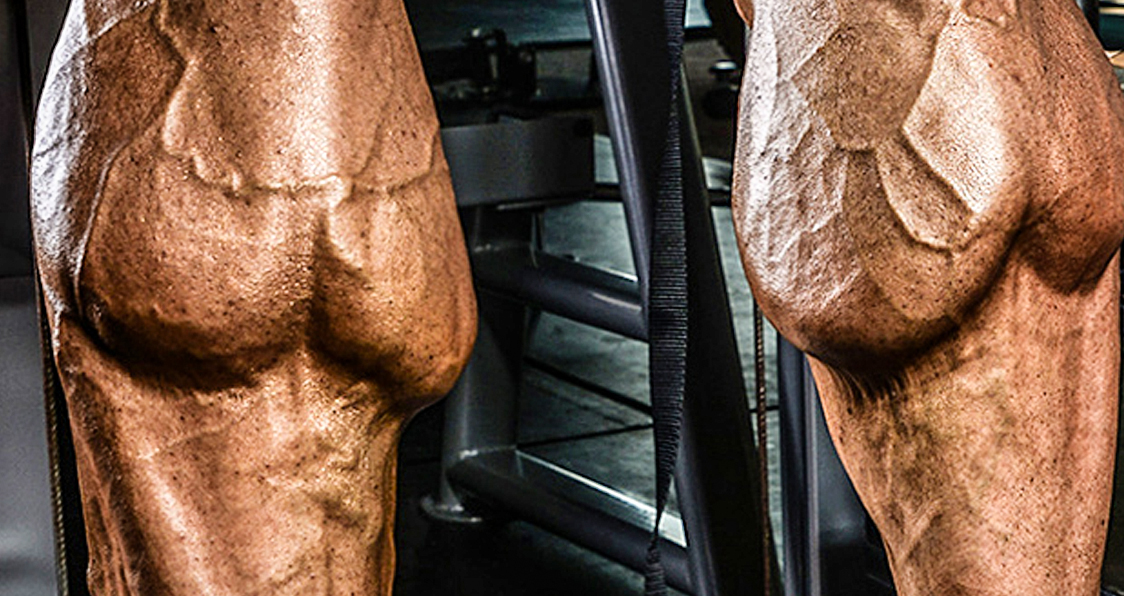
3 Fool-Proof Strategies For Bigger Stronger Calves
Turn those calves into cows.
When most people think of bodybuilders they imagine shredded abs, a broad chest, and ripped arms. Just an overall massive upper body akin to a superhero. But that would only be half the story. Many people who first begin bodybuilding are so obsessed with building their upper bodies that they forget about developing their legs as well. Unless you want to be massive with chicken legs, then you’re going to have to work your lower half.
But even when people do move on to training their legs they focus a great deal on building up their quads and their hamstrings rather than every bit of the leg. The problem is that in order to build a strong foundation you’ve got to have a bottom up approach. That means if you want to own some strong legs in shredded shape then you’re going to have to build up the lowest placed muscle on your body.
The calves are just as important to building symmetry as building up well defined forearms. No one wants 20 inch biceps with some puny forearms. Your arm would look more like a chicken leg than a vascular piece of muscle. The same goes for the legs. Having calves that are both big and strong will ensure that your body’s proportion will stay in order.
Not even Arnold Schwarzenegger could rest on his laurels when it comes to calf definition. It was a body part that he neglected and because of that he wasn’t placing as high as he wanted despite an impressive upper body. Of course, he changed that quickly – and you should too. If you want to be a pro or if you simply want to have a symmetrical form then you’re going to need impressive calves.
If you’re interested in building up some bigger stronger calves then take these valuable strategies under consideration.
High Reps (Muscle Endurance and Strength)
The calves are a multifunctional muscle group that can be built up not only for endurance, but for strength as well. Calf raises isn’t the only exercise that can be performed for gains in the muscle group, but it’s perhaps the most focused exercise for the particular area. The high rep strategy requires you to perform upwards of 30 reps within 2 sets and can prove to be the recipe to giving your calves some great muscle endurance and aid in bolstering your heavy lifts on leg day.
One Legged Calf Routine
The benefits of one legged calf raises are pretty apparent. By performing the exercise one leg at a time you’ll ensure that you’re not only making some major calf gains, but also increasing your balance and overall leg development. That same balance under stress can translate to other lifts that require sturdy legs like the squat.
Inner and Outer Calf Raises
It’s possible to work the calves without this method, but by focusing on specifically building the inner and outer parts of your calves you’ll be able to sure up any lagging points found in the muscle group. By performing calf raises in the pigeon toes style for the inner calves (toes point towards each other, heels out) or duck feet style for the outer calves(toes pointing outward, heels inward), the entire muscle group will be worked at every angle.
What’s your favorite exercise to build your calves? Let s know in the comments below and be sure to follow Generation Iron on Facebook and Twitter.
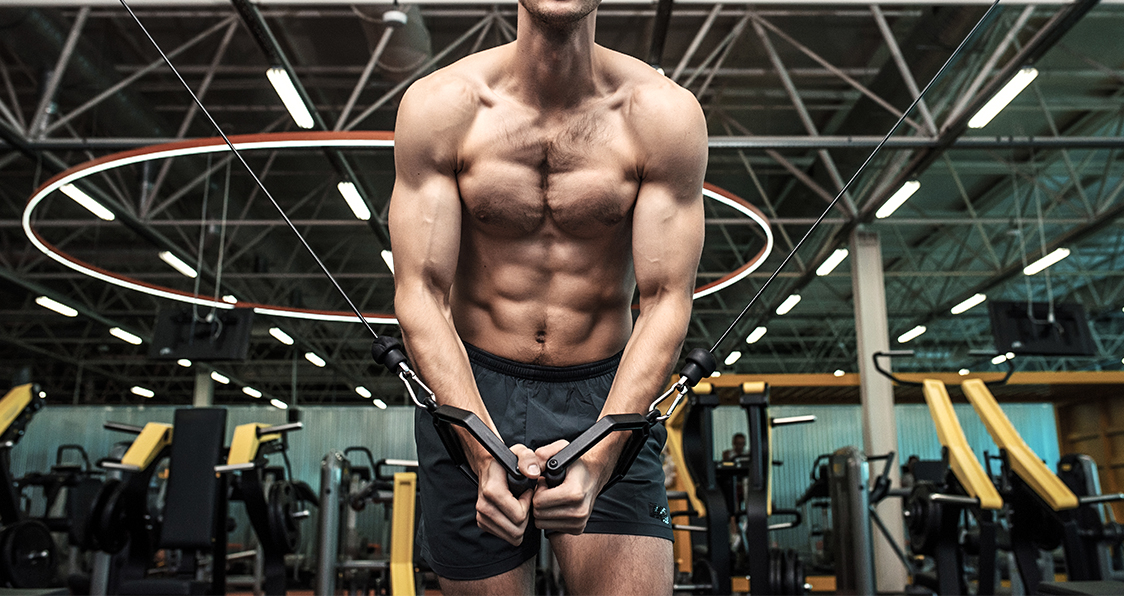
The Chest Workout Even The Pros Fear
The Best Chest Workout You’ll Ever Do
A wide and broad chest is the symbol of masculinity, courage, and strength. There is a reason why all the superheroes have shirt-ripping pecs. Developing a chiseled chest is usually at the top of people’s list when they start training.
Even though chest training gets its fair share of attention, only a few individuals end up building pecs worthy of attention. An ineffective training program is arguably the biggest reason why people can never build the pecs of their dreams.
Most people are done with their chest workouts before they even break a sweat. If you’re one of these people, it’s time that you give up your vanilla chest workout. You need to step-up your game, and we’re here to help you do it.
Cable Crossovers – 5 Sets 20 Reps
Most people perform the cable crossovers at the end of their workouts. In this workout, you’ll be shocking your muscles by starting with the cable crossovers. Crossovers are different from the cable flyes as you have to crossover your wrists at the point of contraction.
Starting with an isolation exercise will help pre-exhaust your pecs. It’s great for your muscle development as you’ll be able to hit all your muscle fibers optimally without having to lift heavyweights.
Superset
Incline Bench Smith Machine Press – 4 Sets 15 Reps
Incline Bench Dumbbell Flyes – 4 Sets 15 Reps
The upper chest is a weak muscle group for most people and can be very stubborn. The smith machine incline bench press targets the upper pecs effectively as it combines the benefits of compound and isolation lifts.
You need to make sure you’re not just going through the motions while performing the exercises. You have to contract and squeeze your pecs with every rep. Fly exercises help develop the separation between your pecs.
Superset
Decline Bench Press – 4 Sets 12 Reps
Dumbbell Pullovers – 4 Sets 12 Reps
If you want the overall development of your pectoral muscles, you need to train it from every angle possible. The decline bench press helps in creating a separation between your chest and abs.
The dumbbell pullovers are one of the most underutilized chest exercises. Not only does it improve the lower chest, but it also helps in creating a V-taper which can help accentuate the shape of your pecs.
Superset
Pec Deck Flyes – 4 Sets 20-15-12-10 Reps
Weighted Dips – 4 Sets 20-15-12-10 Reps
While the isolation (single-joint) exercises help in improving the conditioning of the muscles, compound exercises build muscle mass and strength. You need to maintain a balance between the exercises for optimal pectoral development.
The peck deck flyes are an isolation exercise. Your pecs will be flushed with blood and lactic acid after this movement. On the other hand, the weighted drips are a compound lift that will help you put on size.
Barbell Bench Press – 3 Sets 15-12-10 Reps
Most people start their workouts with the bench press but we have saved it for the last. If you perform the bench press at the beginning of the workout, you have to lift heavy weights to target your muscles optimally.
Lifting heavy can increase your odds of an injury. If you perform the bench press at the end of the workout, you’ll be able to target your pectoral muscles effectively as your mind-muscle connection would already be established.
How many exercises do you perform in your typical chest workout? Let us know in the comments below. Also, be sure to follow Generation Iron on Facebook and Twitter.
